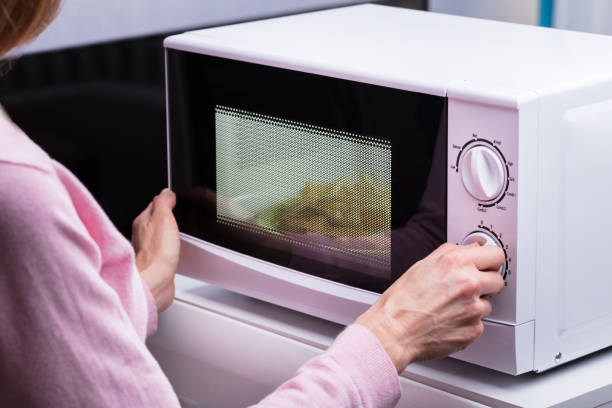
There’s no time to cook on a weekday morning. Many people start the day with a cup of coffee and a snack heated in the microwave. However, household appliances sometimes fail at the wrong time. Let’s figure out what to do if the microwave oven doesn’t want to heat up, and how to deal with the problem.
Why does the microwave not heat: the main causes of the malfunction
The reasons can be divided into 2 groups: Problems whose solution does not require the use of a multimeter and a soldering iron: not enough voltage in the electrical network, poor ventilation, set the wrong mode, etc. Problems that require “looking under the hood”: a magnetron, fuse, diode, or capacitor has failed.Problems with the voltage or overload of the network
Microwave ovens are not particularly whimsical, but they do react to voltage problems. The microwave will not heat well if: – There is not enough voltage in the power supply. In theory, the power supply organization should supply 220 V. However, unfortunately, in small towns, many consumers are forced to settle for 160-200 V. This voltage is only enough to heat a plate, the dish itself will remain cold. To remedy the situation, try setting the mode to a more powerful one and/or give the appliance more time. A radical way to solve the problem is to install a voltage regulator. – The user can cause an overload by connecting two powerful appliances to the same outlet. To remedy the situation, leave only the microwave on. You may be able to reheat the food afterwards.Door malfunction
A properly functioning microwave oven will not operate with the door open. When you close it, the contact closes, and the appliance is ready to heat food. The operation of the mechanism can be seen after removing the housing cover. The latch on the door can break during a move. To prevent this from happening, transport the appliance in a box, using seals when packing. You can also fix the door with tape. If the door does break, the microwave will most likely not spin the tray at all, but there may be heating problems. Troubleshooting options include replacing the latch or the door.The ventilation system is blocked
In this case, the heat will initially come out, but after a while the microwave will stop heating. Air circulation must be ensured for the device to work. Without it, the components overheat and the appliance turns off. This is how the safety mechanism prevents malfunctions. To bring the microwave back to life, wait until it has cooled down, remove any obstacles to cooling, and then turn it back on. Follow the instructions for installing the microwave oven. Do not place the appliance against a wall. It is also not recommended to place various large and small gadgets, laptops, etc. on top of it.Magnetron malfunction
To check the magnetron, first of all, we ring it with a multimeter. Before the procedure, disconnect the transformer part. Check it in 2 stages:- Connect the probes of the multimeter to the free contacts. If it does not respond, this indicates a malfunction. A characteristic squeak or other sign should give you hope.
- Connect one probe to any terminal, the other to the magnetron body. In this position, there should be no squeaking, the opposite indicates a breakdown of the output capacitors. They can be soldered out and replaced with new ones.